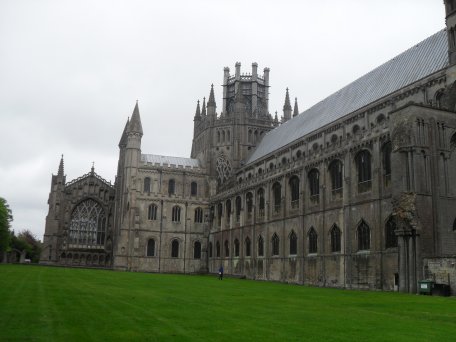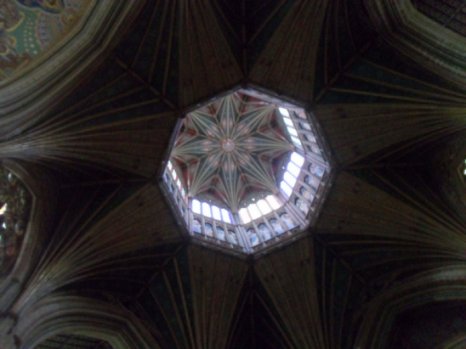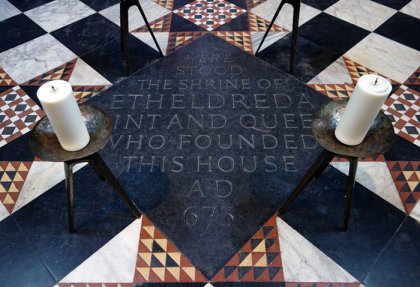Wilfrid headed for Ely, Cambridgeshire, in 695 for an important ceremony: the translation of the relics of Abbess Etheldreda which took place on October 17th. So who was Etheldreda, also known as Audrey?
Etheldreda, the daughter of King Anna of the East Saxons, founded a monastery at Ely in 672 for men and women. She died in 679, and was buried in the churchyard; rumours of miracles started to appear, and she was exhumed. As so often is claimed in these traditions, her body was found to be uncorrupted. A search went out to find something appropriate for her remains, and a Roman sarcophagus was found that was just the right size. The image below shows the translation: it is not clear which one is Wilfrid - the bishop, possibly.
As with so many Monasteries on the East Coast, it suffered depredations by the Vikings: A story tells or raider, convinced that the sarcophagus contained treasure, smashed it open: immediately his eyes fell out of their sockets. The other raiders sensibly left it alone.
It was refounded on the present site in 970; the present building was begun in 1083; it became a cathedral in 1109. The shrine of Etheldreda became an important pilgrimage destination, though the souvenirs of Audrey were not of the best: they became the origin of the word 'Tawdry'. The site of her shrine is marked on the floor, though her relics are no longer there. Some relics are in the Catholic church in Ely, and her hand is in a small reliquary in the church of St Etheldreda, Holborn, London.





Site of Etheldreda's shrine